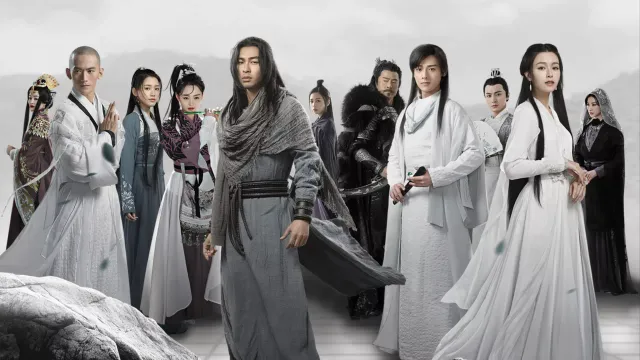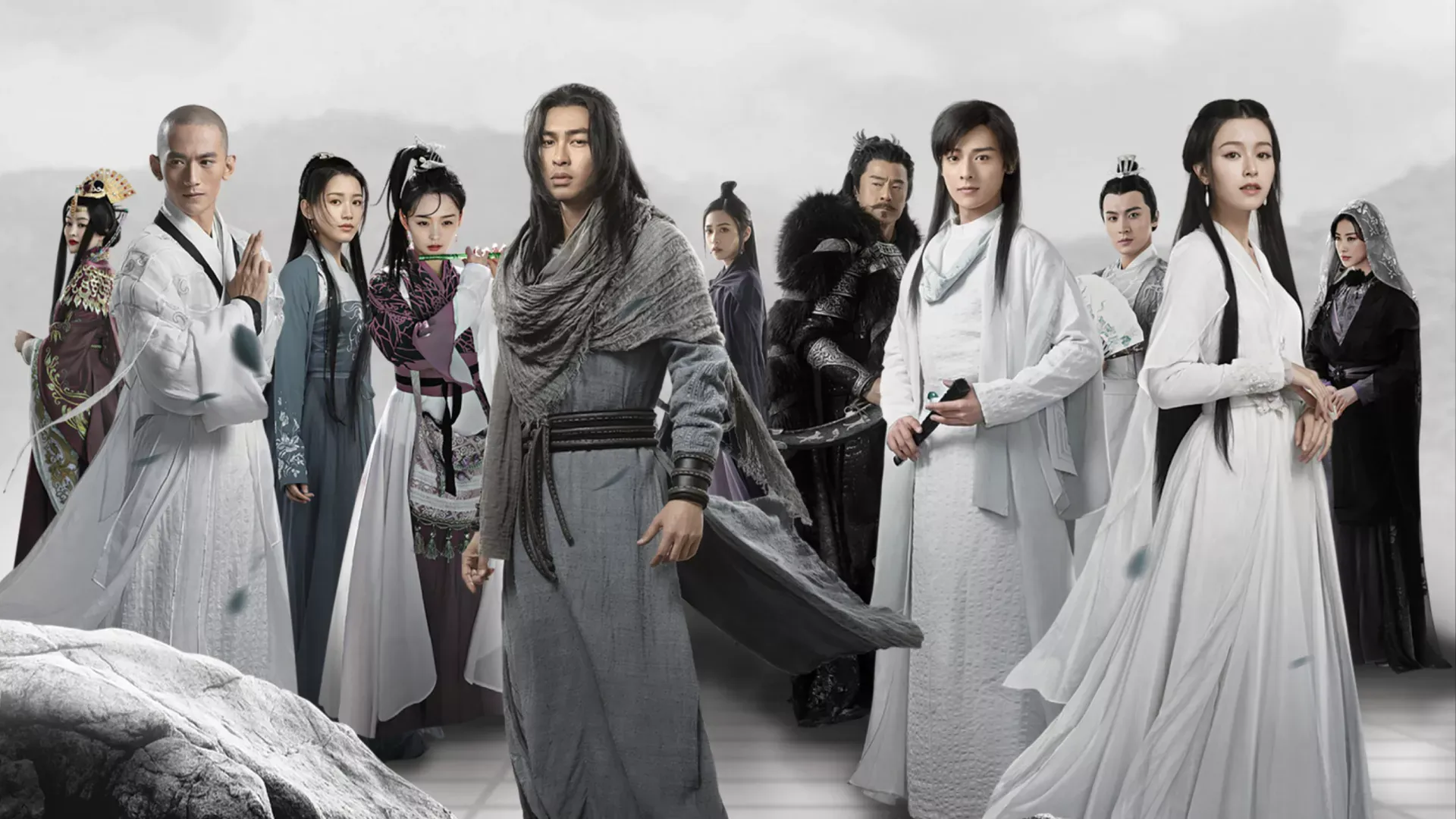western-xia-first-rank-hall (simplified: 西夏一品堂, traditional: 西夏一品堂, pinyin: Xīxià Yīpǐn Táng) was a martial arts organisation under the Western Xia1 royal family that recruited warriors with exceptional martial arts abilities. The organisation was headquartered at Xingqing Palace (兴庆府 – Xīngqìng Fǔ) in the Western Xia imperial palace.
History
Foundation
The western-xia-first-rank-hall was established by the Western Xia royal family as a military organisation to recruit and organize martial artists with exceptional abilities. The organisation’s name indicated that all members were considered to possess first-rank martial arts skills.
The hall served as both a military force and a symbol of Western Xia’s martial prowess, attracting talented warriors from throughout the jianghu2 to serve the kingdom.
Recruitment of the Four Great Evils
After their defeat in the Dali Kingdom,3 the Four Great Evils encountered western-xia-first-rank-hall envoys who were recruiting martial artists from the jianghu. Having nowhere else to go, the four joined the organisation and were given important positions.
Organisation
Leadership structure
The organisation was commanded by Helian Tieshu (赫连铁树 – Hèlián Tiěshù), who held the title of Eastern Expedition General. As a prince of the Western Xia royal family,1 he represented the highest authority within the organisation.
Membership
The hall recruited martial artists who were considered to have first-rank martial arts abilities. Members included both native Western Xia warriors and recruited talents from the jianghu, creating a diverse and powerful fighting force.
Notable members
Helian Tieshu
Helian Tieshu (赫连铁树 – Hèlián Tiěshù) was the commander of the western-xia-first-rank-hall and held the title of Eastern Expedition General. As a prince of the Western Xia royal family, he represented the highest authority within the organisation and led its military operations.
Nu’erhai
Nu’erhai (努儿海 – Nǔ’érhǎi) was a first-rank expert within the organisation, known for his martial arts abilities and loyalty to the Western Xia royal family.
Jiuyi Daoist
Jiuyi Daoist (九翼道人 – Jiǔyì Dàorén) was a disciple of the Lightning Gate and a first-rank expert in the organisation. He was known for his exceptional lightness skills and mastery of the Thunder God’s Shield (雷公挡 – Léigōng Dǎng) technique. Throughout his life, he rarely encountered opponents who could match him, but he was later found dead at the foot of Piaomiao Peak of Tianshan.
Four Great Evils
The Four Great Evils (四大恶人 – Sìdà Èrén) joined the organisation after their defeat in the Dali Kingdom. They were recruited by Western Xia envoys and given important positions within the organisation, serving as elite warriors for the Western Xia royal family.
Li Yanzong
Li Yanzong (李延宗 – Lǐ Yánzōng) was actually Murong Fu in disguise, who infiltrated the organisation for his own purposes. His presence demonstrated the complex political relationships that existed within the martial arts world.
Martial arts abilities
Thunder God’s Shield
Thunder God’s Shield (雷公挡 – Léigōng Dǎng) was the signature technique of Jiuyi Daoist, a disciple of the Lightning Gate. This technique combined exceptional lightness skills with powerful defensive and offensive capabilities, making its practitioner a formidable opponent.
Recruitment standards
The organisation’s recruitment standards were extremely high, with only artial artists considered to have “first-rank abilities being accepted. This created an elite force of warriors who were among the most skilled in the jianghu.
Relationships
Conflicts with Beggars’ Guild
The western-xia-first-rank-hall had a significant conflict with the Beggars’ Guild when they ambushed guild members in Apricot Grove. The organisation’s forces, including the Four Great Evils, engaged in battle with the guild’s elders and members.
During this conflict, Murong Fu (disguised as Li Yanzong) released the “Sad Fragrant Breeze” (悲酥清风 – Bēisū Qīngfēng) to incapacitate the Beggars’ Guild members. This allowed Azhu (disguised as Xiao Feng) and Murong Fu to rescue the captured guild members.
Service to Western Xia royal family
The organisation served as the martial arts arm of the Western Xia royal family, providing military support and maintaining order during important events. They were also involved in security operations during the princess selection process, demonstrating their role in both military and ceremonial functions.
Connection to Lingjiu Palace
The organisation had connections to Lingjiu Palace through the presence of the Tianshan Child Granny and Xuzhu in Western Xia. This connection demonstrated the complex web of relationships that existed between different martial arts organisations in the region.
Locations
Xingqing Palace
Xingqing Palace (兴庆府 – Xīngqìng Fǔ) was the Western Xia imperial palace and served as the headquarters of the First-rank Hall. The palace was located in the Western Xia capital and provided the organisation with direct access to the royal family.
Western Xia territory
The organisation operated throughout the Western Xia kingdom, recruiting talented martial artists and maintaining the kingdom’s martial reputation. Their influence extended beyond the capital to various regions under Western Xia control.
Behind the scenes
The western-xia-first-rank-hall represents one of Jin Yong’s explorations of how martial arts organisations could serve political powers. Through their story, the author examined how talented martial artists could be recruited by state authorities and how their skills could be used for both military and political purposes.
The organisation’s high recruitment standards and elite membership demonstrate the value placed on martial arts expertise in the political landscape of the time. Their conflicts with other factions like the Beggars’ Guild show how martial arts organisations could become involved in larger political struggles.
The presence of characters like Murong Fu in disguise and the Four Great Evils among their ranks illustrates the complex nature of loyalty and identity in the martial arts world, where personal ambitions and political allegiances often conflicted.
See also
- Jin Yong factions
- Demi-Gods and Semi-Devils factions
- Helian Tieshu – Commander of the organisation
- Four Great Evils – Recruited members
- Jiuyi Daoist – Lightning Gate disciple
- Western Xia – The kingdom that controlled the organisation
- Beggars’ Guild – The faction they conflicted with
External links
- Western Xia on Wikipedia
- Western Xia (Chinese) on Chinese Wikipedia
Footnotes
-
西夏 – Xī Xià. Also known as the Tangut Empire. Powerful kingdom in northwestern China, spanning modern-day Ningxia and Gansu, ruled by the Tanguts from 1038-1227 CE. See Wikipedia. ↩ ↩2
-
江湖 – jiānghú. The world of martial arts. A sub-society involving all who are related to the martial arts scene. ↩
-
大理国 – Dàlǐ Guó. Kingdom in southwest China, modern-day Yunnan, ruled by the Bai people of the Duan Clan from 937 to 1253 CE. See Wikipedia. ↩


